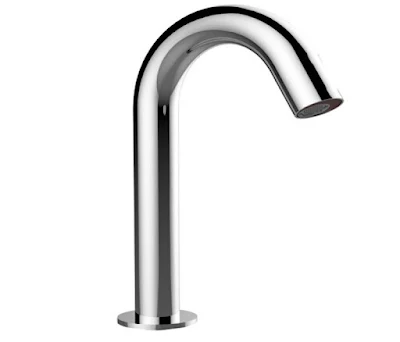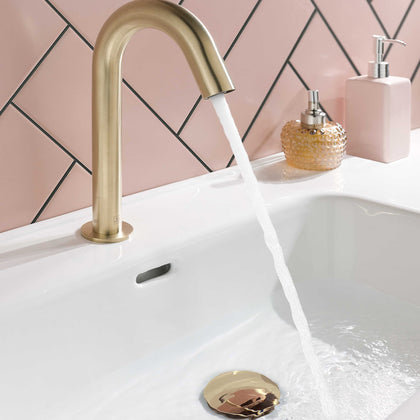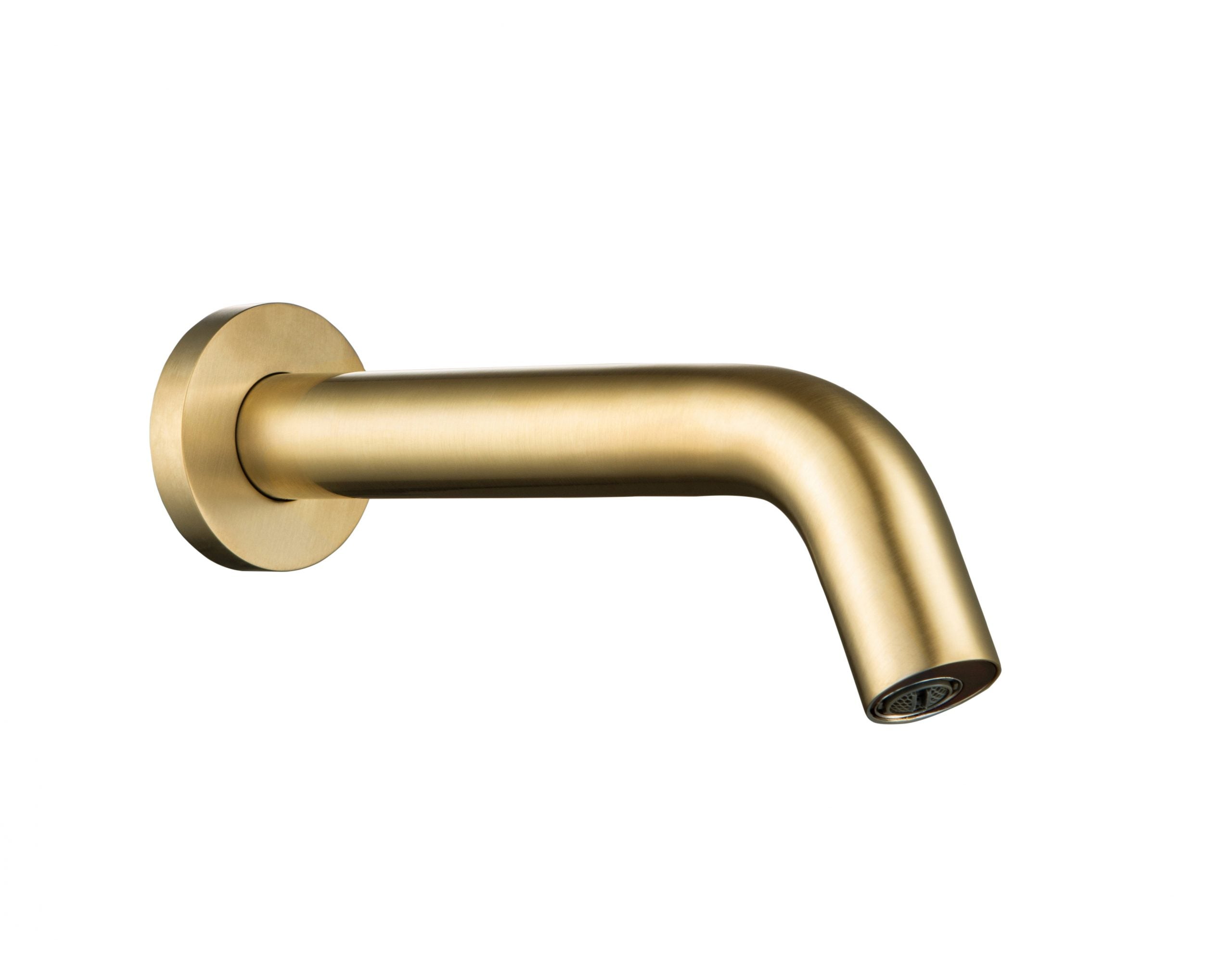In the wake of COVID-19, adopting measures such as wearing masks, practicing social distancing, and upholding stringent hygiene standards has become imperative. Tapron recognizes the importance of these precautions and offers a range of non-contact products designed to safeguard users' health and minimize the risk of infection.
Utilizing cutting-edge sensor technology, our touchless faucets are engineered to detect hands beneath the spout. Upon sensing movement, an infrared sensor triggers the water flow, ensuring a hands-free and hygienic experience. Take, for instance, our Ola Sensor kitchen tap, which not only promotes hygiene but also facilitates effortless cleaning around the sink area.
The introduction of automated faucets marks a significant leap in hygiene standards, as they eliminate the need for direct contact with water, thereby reducing the potential spread of germs. Additionally, these faucets contribute to water conservation efforts, offering a sustainable solution for everyday use.
Furthermore, our safety system boasts advanced features such as the ability to halt water flow in the absence of detected movement. This not only mitigates the risk of flooding but also minimizes water wastage, aligning with our commitment to environmental responsibility and resource efficiency. With Tapron's and Goldbathroom innovative non-contact products, maintaining hygiene and preventing unnecessary risks has never been easier or more efficient.
Sensor taps:
Introducing our sensor taps, a revolutionary advancement in faucet technology. Unlike traditional models, our sensor taps feature a sensor integrated directly into the faucet body, streamlining functionality and enhancing user experience.
Activating the sensor is effortless – simply hold your hand within a few centimeters of the tap to trigger the mechanism. Utilizing specialized technology, the sensor efficiently captures the infrared light emitted by your hands, initiating the water flow with precision and ease.
Moreover, our mixer sensor offers adjustable settings, allowing users to customize the activation range according to their preferences. With a versatile range spanning from 1 to 30 centimeters, you can tailor the sensor sensitivity to suit your specific needs and optimize convenience in your daily routines.
Description of the device
These components are non-contact and can be used in taps:
- Batteries
- Filtration element
- Spout
- Control unit electronic type, batteries or mains-powered
- A valve
- Connecting the hose
Touch faucets equipped with remote controls are readily available for purchase through online retailers. Offering unparalleled convenience, these innovative faucets allow users to regulate water flow and toggle faucet operation from a distance.
While undeniably convenient, it's worth noting that these advanced models typically come with a higher price tag compared to traditional faucets. This premium is justified by the added functionality and convenience they offer, providing users with greater flexibility and control over their water usage.
With remote-controlled touch faucets, you can enjoy the luxury of adjusting water flow and managing faucet operations from the comfort of your couch or bed. Although they may represent a higher initial investment, the convenience and efficiency they provide make them a worthwhile addition to any modern home.
Both benefits and drawbacks
Disadvantages :
 |
| Sensor Deck Mounted Brass Basin Taps |
Convenience
Utilizing a contactless operation system offers unparalleled convenience, hygiene, and cost-effectiveness. This innovative technology allows users to initiate water flow without physical contact, ensuring a sanitary environment in the kitchen. Additionally, users have the flexibility to preset the desired temperature and water pressure, further enhancing convenience and comfort.
Occasionally, adjustments to the water pressure or temperature may be necessary. In such cases, the system can be easily reconfigured to accommodate specific preferences or changing needs. While models equipped with remote controls offer added convenience, allowing for seamless adjustments from a distance, they may also come with a higher price tag due to their advanced features.
For situations where precise temperature control is not a priority, a touchscreen interface can be installed in the kitchen. This provides a user-friendly alternative for managing water flow and other faucet functions, offering simplicity and efficiency without the need for complex temperature settings.
Here are some tips to help you choose the right sensor faucet
Here are some insightful tips to guide you in selecting the perfect sensor faucet for your kitchen:
1. Consider Contactless Options : When opting for a contactless faucet, it's essential to choose one that suits your specific needs. Explore options with dual-sensor switches, allowing convenient control over hot and cold water supplies. However, be mindful that these may not be suitable for installation in kitchen sinks with single-pipe plumbing systems.
2. Evaluate Mixer Spout Height : The height of the mixer spout plays a crucial role in functionality, particularly when dealing with larger items like pots. Opting for taller models with shallow sinks can facilitate easier washing of oversized cookware due to the ample space provided.
3. Assess Coating Durability : The type of coating on the faucet is another key consideration. Brass and chrome-plated taps are renowned for their durability, offering long-lasting performance. While other materials may be available at similar prices to chrome, it's essential to prioritize durability and longevity in your selection process.
4. Embrace Touch-Sensitive Faucets : Touch-sensitive kitchen faucets present an excellent choice for modern kitchens, boasting simple setup and user-friendly operation. Choosing the right one is straightforward – ensure the mixer functions smoothly, consider the type of coating for durability, and pay attention to the height of the spigot to accommodate your kitchen's needs effectively.
By following these guidelines, you can confidently navigate the selection process and choose a sensor faucet that not only meets your requirements but also enhances the functionality and aesthetics of your kitchen space.
Processing of sensor taps
Before installing a sensor tap, certain prerequisites need to be addressed to ensure smooth processing:
Sensor taps typically require a power source, which can be provided through either transformers or batteries. This electrical supply is essential for the sensor to detect nearby objects such as hands or vessels. By maintaining proximity to the solenoid valve, the sensor can effectively detect objects. The solenoid valve controls the flow of water, either allowing it to flow or shutting it off completely.
When an object, such as a hand or vessel, is detected by the sensor, the solenoid valve opens, allowing water to flow from the tap. Once the object is removed, a signal is sent to the solenoid valve, prompting it to close and cease water flow.
Understanding the functionality of sensor taps is crucial for their effective operation. Prior to installation, it's important to ensure that your bathroom is equipped with an electrical outlet to provide power to the sensor tap. This preparation will facilitate a seamless installation process and enable you to start using the sensor tap promptly.
For further insights into kitchen tap options, you may find this blog on 'Are Pull-Out Kitchen Taps Any Good?' helpful.






No comments:
Post a Comment